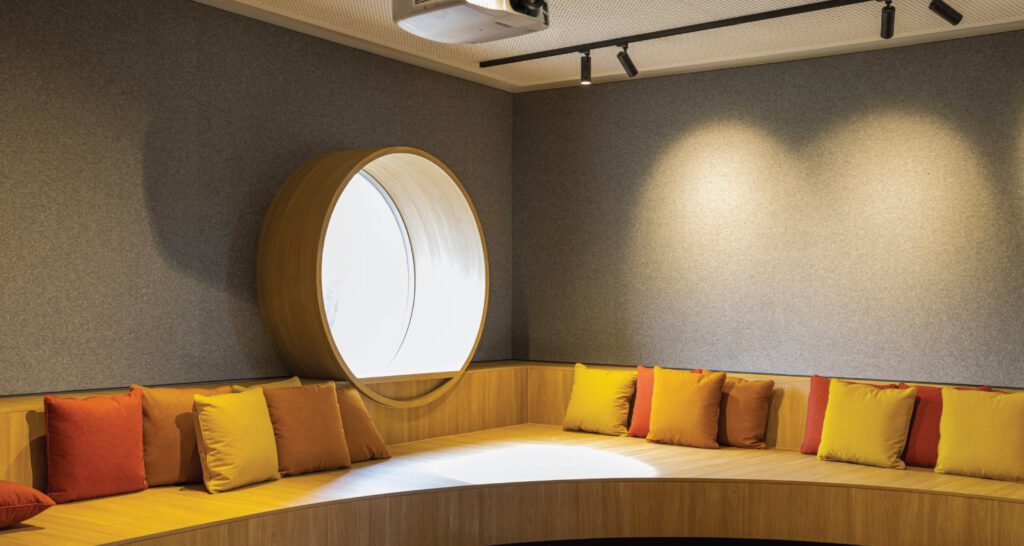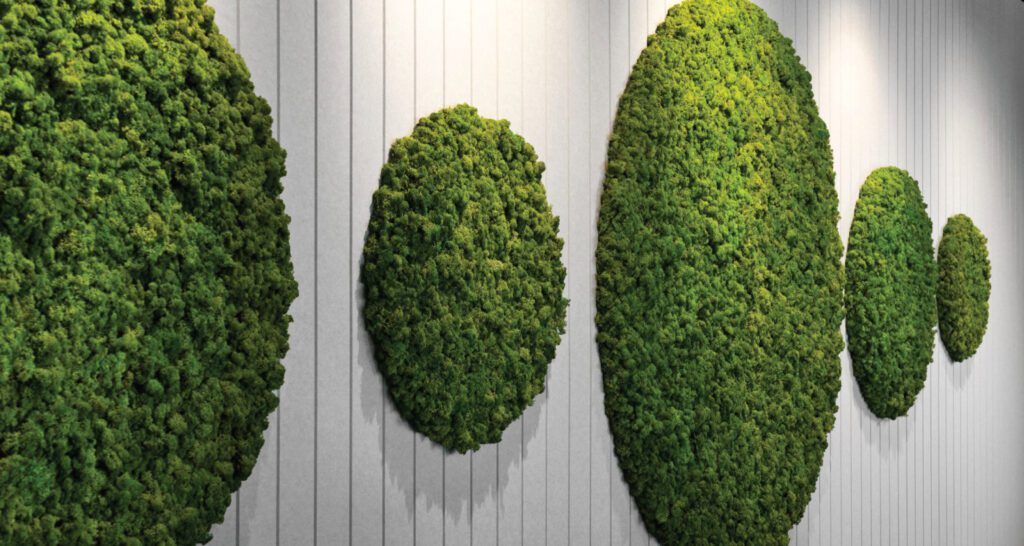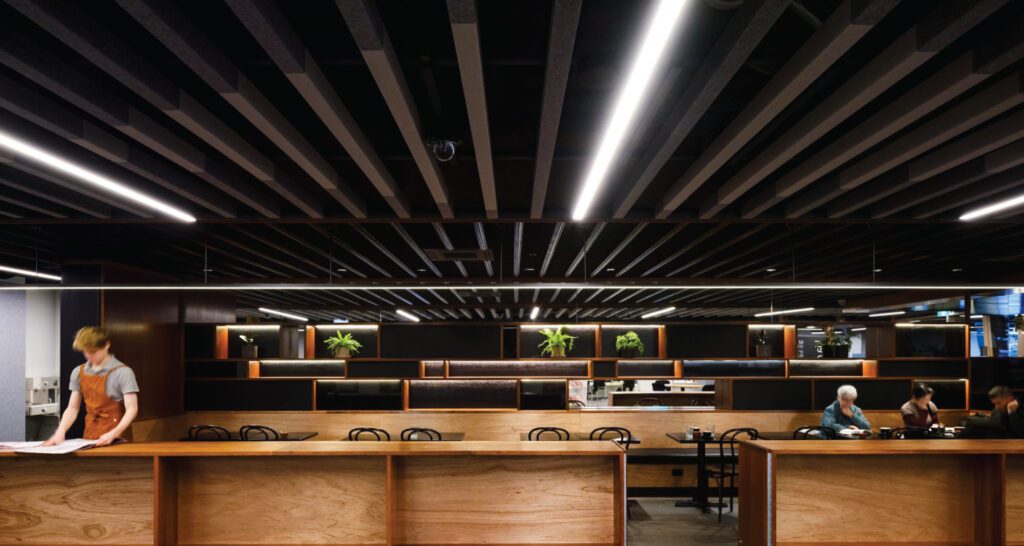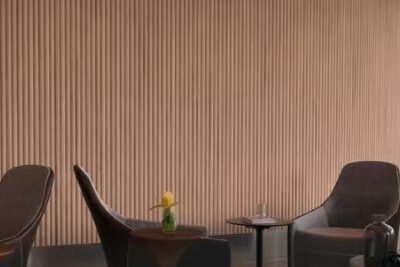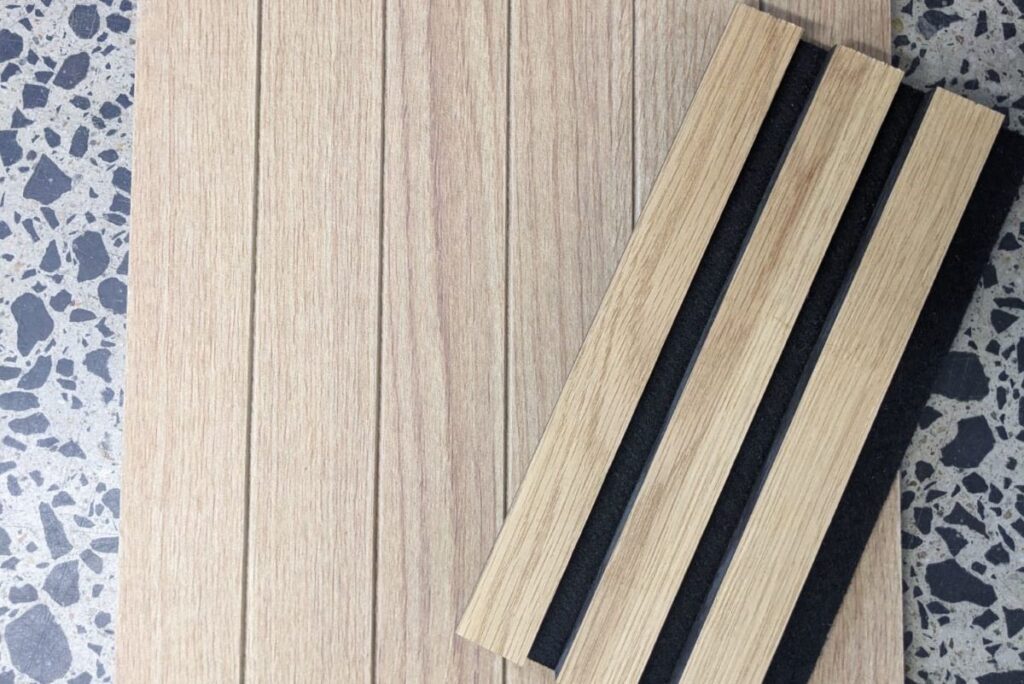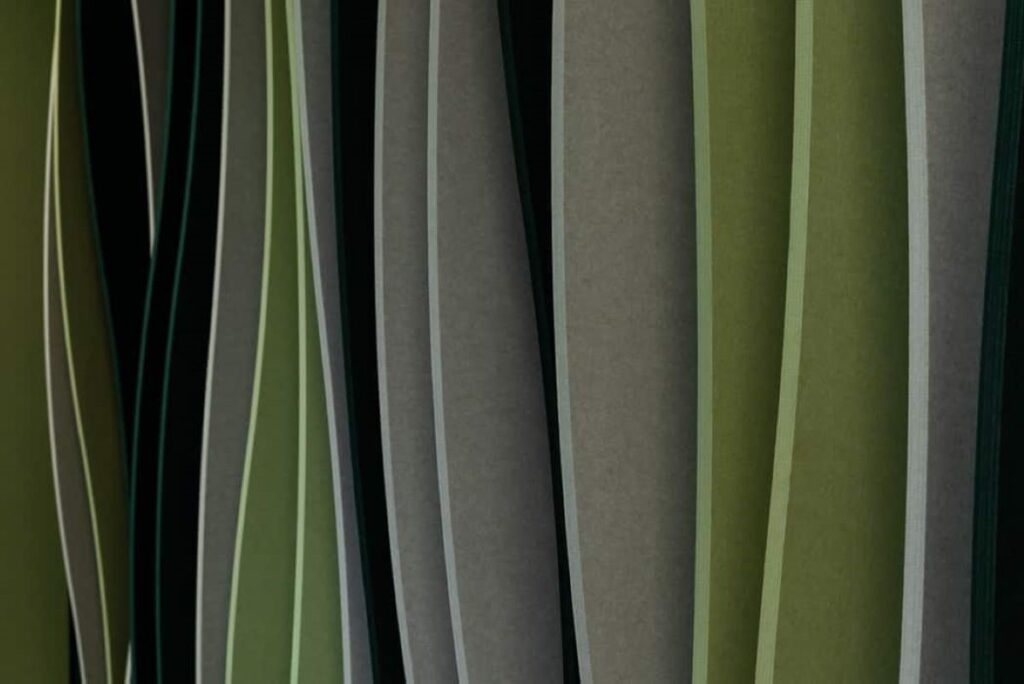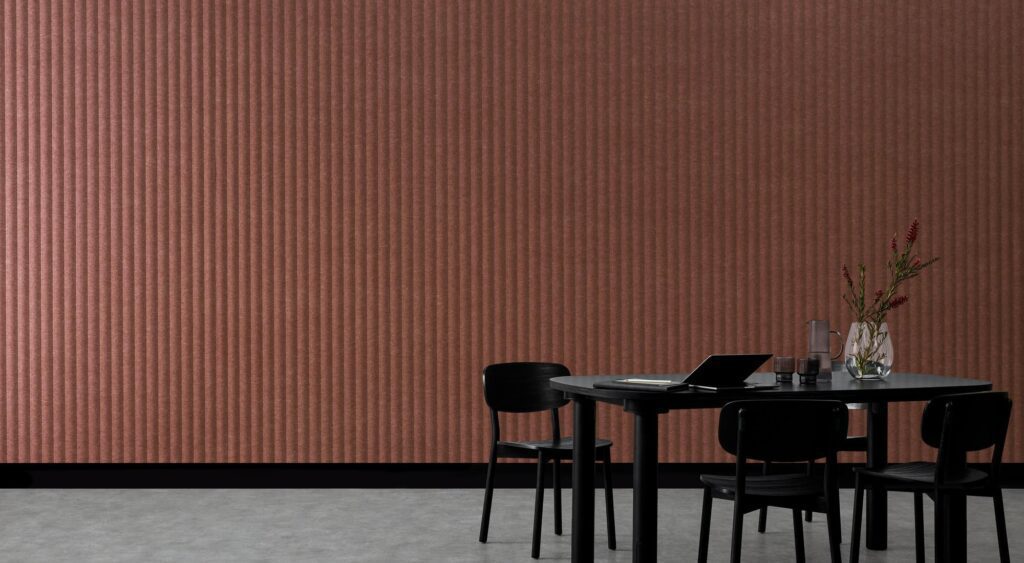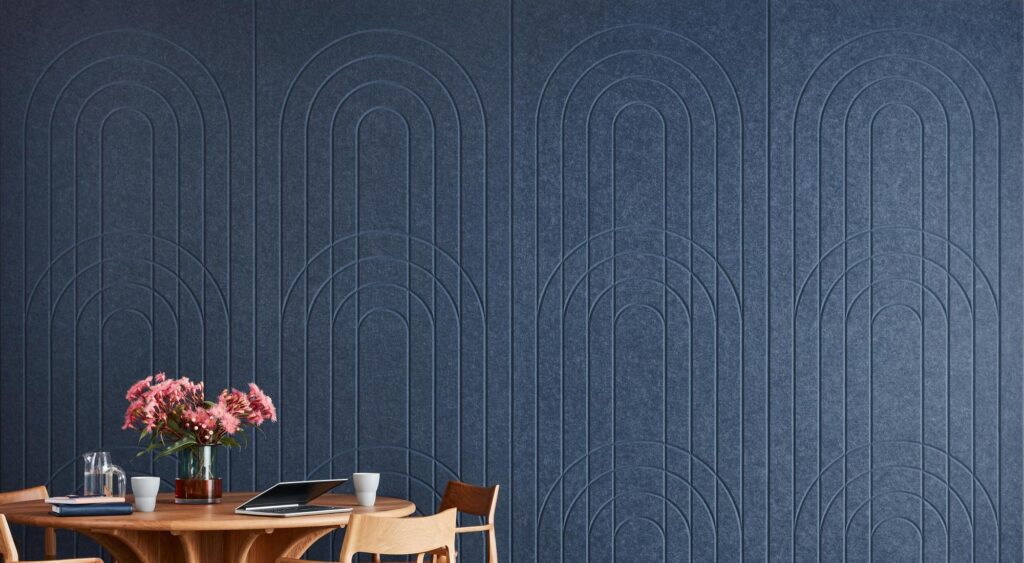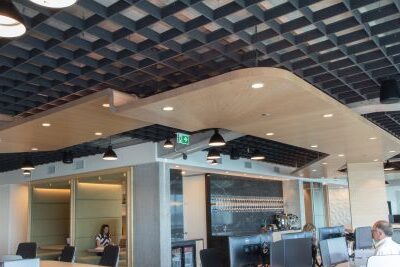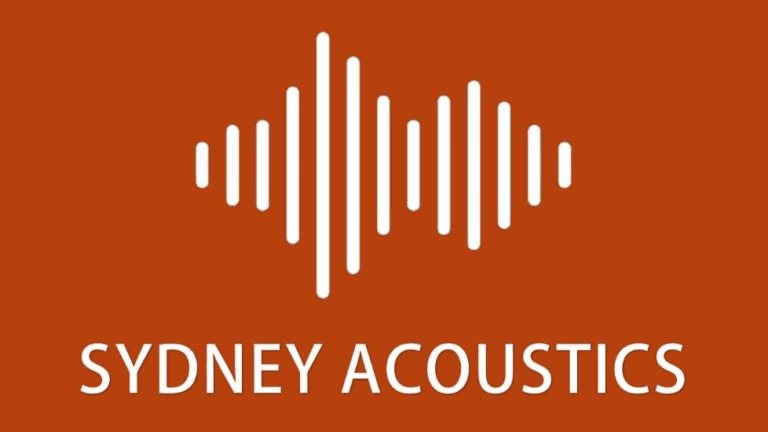Welcome to Sydney Acoustics, where we specialise in providing high-quality acoustic solutions for interior spaces.
If you’re looking for the right interior acoustic solution, you’ve come to the right place. We understand that selecting the right acoustic treatment for your space can be a daunting task, but we’re here to help.
The Problem – Reverberation:
Firstly, we need to understand what the problem is and how we are going to treat it. Spaces that are often referred to as loud and uncomfortable, are often spaces with hard finishes throughout such as concrete, plasterboard, ceramic tiles, timber, and glazing. When sound is emitted into the space, such as conversation, the sound energy will reflect off the hard surfaces – this is called reverberation.
Reverberation is measured by time in seconds, the longer the reverberation time the less comfortable and more distracting the space will be for occupants. Research shows that reverberation in office environments is troublesome as employee frustration increases and work output decreases with higher reverberation time in the spaces. Reverberation time is often referred to as RT60 (Reverberation Time 60) and is the measure of time in seconds for how long it takes for a sound to decrease by 60 decibels.
For example, a balloon pop is on average 160 decibels and is typically used when measuring the reverberation in a space as it is a single noise event. The time taken for that noise event to decrease to 100 decibels is the reverberation time.
How to compare products:
When selecting an acoustic treatment for your space, the primary measurement of performance used in Australia is the Noise Reduction Coefficient (NRC), this value is determined by conducting a test on the material within a reverberation chamber at a NATA accredited test facility. We at Sydney Acoustics also recommend the AlphaW be used to consider a broader range of frequencies to give a closer correlation to the actual likely performance once the product is installed.
Reverberation is measured by time in seconds, the longer the reverberation time the less comfortable and more distracting the space will be for occupants. Research shows that reverberation in office environments is troublesome as employee frustration increases and work output decreases with higher reverberation time in the spaces. Reverberation time is often referred to as RT60 (Reverberation Time 60) and is the measure of time in seconds for how long it takes for a sound to decrease by 60 decibels.
For example, a balloon pop is on average 160 decibels and is typically used when measuring the reverberation in a space as it is a single noise event. The time taken for that noise event to decrease to 100 decibels is the reverberation time.
|
Term |
Detail | |
|---|---|---|
|
NRC – Noise Reduction Coefficient |
The NRC value is the go to performance criteria in Australia for measuring the absorbance of a material. The absorption coefficient correlates to percentage % of sound energy absorbed. For example, if a material has an NRC of 0.45 it will absorb 45% of sound energy that contacts that material | |
|
Sabines |
Sabines are an extension of the absorption coefficient and is used to determine how the reverberation time will be impacted with the amount of acoustic treatment added to a space. This is typically calculated by taking the absorption coefficient, multiplying by the m2 added to the space with the result being the total sabines added to the space | |
|
Alpha W – weight sound absorption coefficient |
Similar to the NRC value, however the Alpha W considers a broader range of frequencies. This is the recommended criteria for comparing a products performance as it provides a more realistic insitu performance of the material. | |
When selecting the right acoustic solution, it’s important to consider the purpose and function of your space. For example, a recording studio requires a different type of acoustic treatment than a classroom.
Designing for acoustics
Designing for acoustics is crucial for creating spaces that are not only aesthetically pleasing, but also functional for their intended use. Whether it’s a concert hall, a classroom, an office, or a home, the acoustics of a space can greatly affect its overall comfort and usability. Here are some key considerations for designing for acoustics:
1. Purpose of the space: The purpose of the space should be considered when designing for acoustics. For example, a concert hall requires a different level of sound absorption and reflection compared to a classroom or office.
2. Materials and finishes: The materials and finishes used in a space can greatly affect its acoustic properties. For example, hard surfaces like concrete and glass reflect sound waves, while soft materials like curtains and carpets absorb them.
3. Sound isolation: Sound isolation is important for spaces that require privacy or for reducing noise pollution. This involves using materials that prevent sound from traveling through walls, floors, and ceilings.
4. HVAC systems: HVAC systems can impact acoustics by creating unwanted noise. Designers should consider noise levels when selecting HVAC equipment and designing ductwork.
5. Room shape and layout: The shape and layout of a room can affect its acoustic properties. Spaces with parallel walls and flat surfaces can create unwanted echoes and reverberation, while irregularly shaped rooms can scatter sound waves and create a more natural and pleasing acoustic environment.
6. Occupancy and activity level: The number of people occupying a space and the level of activity can greatly affect its acoustic properties. Spaces with high occupancy or activity levels may require more sound absorption or isolation.
Designing for acoustics is important for creating functional and comfortable spaces that serve their intended purpose. By considering these key factors, designers can create environments that are not only visually appealing, but also acoustically pleasing. AS/NZS 2107 provides a table of recommended reverbnation times for spaces to create healthy spaces for the occupants.
AS/NZS 2107 Recommended reverberation times by room type:
| Space type | Typical sound level in space (decibels) | Recommended Reverberation Time |
|---|---|---|
| Open plan office | 40 to 45 | 0.4 |
| Boardroom / Conference rooms | 30 to 40 | 0.6 – 0.8 |
| Reception/ administration areas | 40 to 45 | 0.6 – 0.8 |
| Indoor pools | 50 – 60 | < 2.0 |
| Restaurant / bar | 50 – 70 | 0.8 – 1.2 |
| Library | 30 – 45 | 0.8 |
| General learning spaces | 40 – 45 | 0.6 |
How to achieve the desired reverberation time
There are many facets of a space that will influence the experience, a few common examples are proximity to external sounds such as traffic noise, how many hard finished surfaces there are in the space like concrete or timber floors, plasterboard lined walls and ceilings, and other items such as bench tops and boardroom tables.
The key recommendation to treating the acoustics within the space is to add soft finishes, such as carpet, soft upholstered chairs, and cushions where possible. However, this too often is not enough meaning the addition of acoustic ceiling linings and acoustic wall linings are required to bolster the acoustics within the home, office, or restaurant.
Acoustic solutions
At Sydney Acoustics, we offer a wide range of Autex Acoustics products that cater to different needs and requirements. Below are a few options we recommend:
Autex Quietspace® panel:
If you’re looking for a solution to reduce echo and reverberation, Autex Quietspace® Panels are an excellent choice.
These panels are available in 25mm and 50mm thickness and are made from 100% polyester and are designed to absorb sound and improve speech intelligibility. Tested and certified as a Group 1 fire with a manufactures warranty of 10 years.
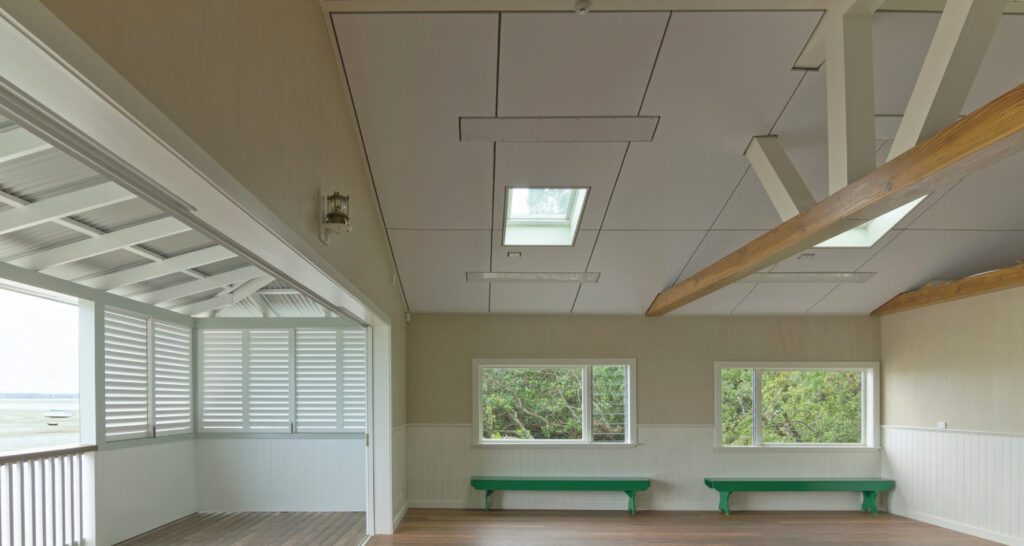
Available in colours: Black, White, Grey.
Autex Cube™ panel:
For spaces with high traffic and high impact, Autex Cube™ Panels are a great choice. These panels are made from a blend of recycled polyester and are designed to provide excellent acoustic performance while also being durable and impact-resistant.
Available in 12mm and 24mm thick profiles with a tested Group 1 fire rating and Carbon Neutral certification.
Autex Groove panel:
If you are looking to add design whilst enhancing the acoustics, Autex Groove’s product range offers a bespoke wall and ceiling lining solution that offers sleek profiles by using precision cut profiles to utilise lighting and shadowing for seven standard profiles, including V1 a VJ finished product. Available in 12mm and 24mm thick profiles with a tested Group 1 fire rating.
Available in 19 colours
Autex Frontier 3 dimension acoustic ceilings baffles:
Autex Frontier acoustic ceiling systems offer an aesthetic and functional finish to commercial and residential spaces.
The profile enables designers to not only overhaul the comfort of the space, but also enhances the ambience through seamless flowing profiles that are either installed via direct fix or suspended from enabling access to services behind.
With a 10 year manufactures warranty, Autex Frontier systems are Group 1 fire rated and Global GreenTag Level A Certified.
Need some advice?
Call us on 0400 439 199
Email us at general@sydneyacoustics.com.au

